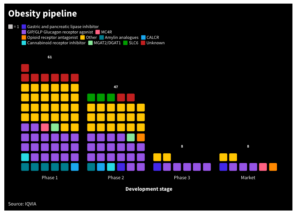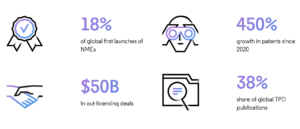
Serge Bernasconi: Getting regulation right for patients and innovation
The revision of the EU Medical Devices Directives (MDD) could not have come at a more critical moment. The recent PIP breast implant incident has made it crystal clear that healthcare actors must pull together to ensure similar cases of fraud never happen again.
We believe Europe needs a clear, predictable and effective regulatory system that deserves patient trust a system that provides them with safe and timely access to the latest innovative technologies. The European Commission has tabled a proposal, and we welcome the majority of their recommended measures. They improve patient safety, do not unnecessarily delay patient access to life-saving medical technologies and do not hamper innovation. The proposal is on the right track in several key areas, and we applaud the Commission’s calls for improving notified bodies, increasing EU Member State coordination on vigilance and establishing a central registration database that can be accessed by governments and patients alike.
But as we work together towards an improved system, we must remember that the current decentralised notified body system has provided a high level of safety, and consistently granted people in Europe the very fastest access to life-saving medical technologies.
We are convinced that, with the support of a regulatory framework that successfully marries safety and the availability of new technologies, we can remain in this privileged situation in Europe. The Commission’s proposed scrutiny procedure, however, represents a step in the wrong direction. When considering changes to the EU regulatory framework, we must strive to answer three questions:
1. Will the changes improve safety for patients?
2. Will they allow life-saving medical technologies to be made available to people in Europe just as fast as they do today?
3. Will they encourage the innovation that European healthcare systems urgently need to become more efficient?
In the case of the scrutiny procedure, we believe the answer to all three of these questions is no, and therefore strongly oppose the proposed measure. The procedure will fundamentally change the current system, but will not lead to the desired outcome: increased safety for patients. It would address some calls to move towards a centralised, pharmaceuticals-like system, but will ultimately harm European patients and negatively impact European small and medium sized enterprises (SMEs). Recent independent research has shown that systems like these (similar to that at the US FDA) delay patient access to new technologies by 3 to 5 years without delivering additional safety.
Europe needs a decentralised system that is specific to medical devices if it is to maintain safe and timely patient access to technologies, and keep Europe’s medical technology innovation engine running.
We are committed to providing medical technologies that improve people’s lives and that are at the same time cost-effective. Europe has become a leader in healthcare innovation, and now more than ever it needs to cope with increased pressure on national healthcare budgets. The current regulatory framework has provided a high level of safety for patients in Europe without delaying access to life-saving medical technologies. Let’s not unnecessarily drive Europe’s strong innovation and research capabilities to other continents at a time when they are urgently needed here.
Serge Bernasconi
Serge Bernasconi, currently the Chief Executive Officer of Eucomed the European Medical Technology Industry Association has more than 30 years of experience in the worlds of pharmaceuticals and medical devices at companies such as Johnson & Johnson, Schering Plough in the US and Europe, and more recently Medtronic. In his capacity as President & International Regional Vice President of Medtronic France, Bernasconi was elected President of APIDIM (The French Association for the Promotion of Innovation in Medical Devices), and Vice President and Treasurer of SNITEM (French Medical Technology Industry Association).


 IQVIA
IQVIA White House
White House Clarivate
Clarivate